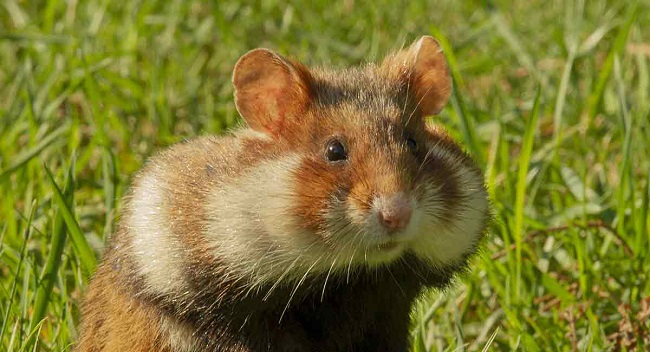Hamsters, known for their adorable appearance and playful nature, are popular pets worldwide. However, these small, charismatic creatures also have a wild side, literally.
This article delves into the natural habitats of Hamsters, exploring where they live in the wild and how their wild environment shapes their behaviors and characteristics.

Natural Habitats of Wild Hamsters
Here are some natural habitats of Hamsters:
Read Also:
Syrian Hamsters
Syrian, or Golden, Hamsters are the most common type kept as pets. In the wild, they’re native to the arid areas of northern Syria and southern Turkey.
The landscape in these regions is semi-desert, featuring sand dunes, sparse vegetation, and occasional grains, which play a significant part in their diet.
Dwarf Hamsters
There are several species of dwarf Hamsters, including Roborovski, Campbell’s, and Russian Winter White, each with a unique natural habitat.
Generally, they originate from the steppes of eastern and central Asia, where the environment ranges from desert to scrubland and meadows.
Chinese Hamsters
Chinese Hamsters, also known as striped Hamsters, hail from the deserts of Mongolia and Northeast China. Their natural habitats are characterized by sparse vegetation and dry, sandy soil.
Life and Behaviors of Wild Hamsters
Here are some behaviours of wild Hamsters:
Nocturnal Nature
Like their domestic counterparts, wild Hamsters are primarily nocturnal, meaning they are most active during the night. This behavior allows them to avoid predators and extreme daytime temperatures in their native habitats.
Solitary Lifestyle
In the wild, Hamsters are solitary creatures. Apart from mating periods or a mother raising her young, Hamsters prefer to live alone. Their territories are usually marked by scent glands, warning off other Hamsters from their space.
Burrowing Habitats
Regardless of their species, wild Hamsters are excellent diggers, creating complex burrow systems to live in. These burrows provide protection from predators and harsh weather, and they often include multiple entrances, nests, and food storage chambers.
The Diet of Wild Hamsters
Wild Hamsters have a varied diet based on their local ecosystem. They’re omnivores, consuming a mix of seeds, grains, fruits, vegetables, and occasional insects or small animals. They have large cheek pouches that they use to collect and store food, bringing it back to their burrows.
Conservation Status of Wild Hamsters
While many Hamster species are considered of least concern for extinction, some, like the European Hamster, are critically endangered due to habitat loss and changes in agricultural practices.
Key Takeaways
- Wild Hamsters originate from various parts of the world, including Syria, Turkey, Mongolia, China, and eastern and central Asia.
- Wild Hamsters are primarily nocturnal, solitary, and are known to create intricate burrows.
- They follow an omnivorous diet, consuming a mix of grains, seeds, fruits, vegetables, and occasional insects or small animals.
- Some wild Hamster species are critically endangered due to habitat loss and agricultural changes.
As pet owners or animal enthusiasts, understanding these wild behaviors can help us provide more natural and enriching environments for our pet Hamsters, ensuring their health and happiness.
Read Also:
Conclusion
Understanding the natural habits and habitats of Hamsters provides a fascinating insight into these adorable creatures’ wild lives.
From the sandy regions of Syria to the Asian steppes, Hamsters have adapted perfectly to survive and thrive in their respective environments.
























